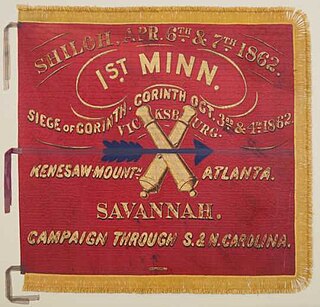
The 1st Minnesota Heavy Artillery Regiment was a Minnesota USV artillery regiment during the American Civil War.
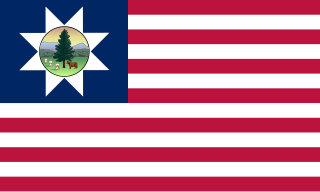
During the American Civil War in the mid-19th Century, the state of Vermont contributed five artillery units to the Union war effort.

The 1st Regiment Wisconsin Heavy Artillery was an artillery regiment that served in the Union Army during the American Civil War.

The 1st New Hampshire Heavy Artillery Regiment was an American Civil War regiment, first raised in 1863 for the defenses of Portsmouth Harbor in New Hampshire and Maine. They were later transferred to garrison the numerous fortifications of Washington, D.C.
4th Indiana Battery Light Artillery was an artillery battery that served in the Union Army during the American Civil War. It was often referred to as "Bush's Battery".
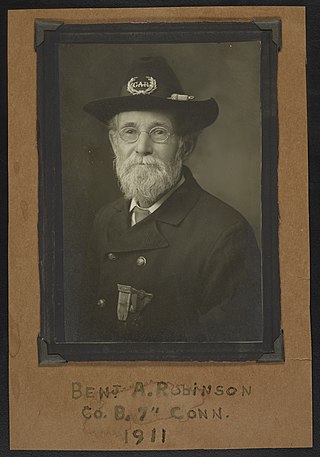
The 7th Connecticut Infantry Regiment was an infantry regiment that served in the Union Army during the American Civil War. Because it was in the same brigade as the 7th New Hampshire Volunteer Regiment, both regiments were often jointly called the '77th New England'.
The Memphis Battery Light Artillery (African Descent) was an artillery battery that served in the Union Army during the American Civil War. The unit was also called 1st Tennessee Battery (African Descent).

Battery B, 1st Rhode Island Light Artillery Regiment was an artillery battery that served in the Union Army during the American Civil War.

The 6th Regiment New York Heavy Artillery, U.S. Volunteers, the "Anthony Wayne Guard", was an artillery regiment of the Union Army during the American Civil War. It was originally mustered in as the 135th New York Volunteer Infantry Regiment, and served as both artillery and infantry.

1st Connecticut Heavy Artillery Regiment was an artillery regiment that served in the Union Army during the American Civil War.

The 2nd New York Heavy Artillery Regiment was a heavy artillery regiment that served in the Union Army during the American Civil War. During the Siege of Petersburg the regiment operated as infantry.

The 29th Connecticut Colored Infantry Regiment was an infantry regiment that served in the Union Army during the American Civil War. It is credited as being the first infantry regiment to enter Richmond, Virginia, when the city surrendered in the Siege of Petersburg.
The 4th New York Heavy Artillery Regiment, U.S. Volunteers was a heavy artillery regiment that served in the Union Army during the American Civil War. The regiment operated as both heavy artillery and infantry beginning in February 1862 while serving in the defenses of Washington, D.C., and continued in both capacities until the end of the war.

3rd Rhode Island Heavy Artillery Regiment was a heavy artillery regiment that served in the Union Army during the American Civil War.
The 9th Massachusetts Battery was a field artillery battery that served in the Union Army during the American Civil War.

The 1st Connecticut Light Artillery Battery, recruited from the state of Connecticut, served in the Union Army between October 26, 1861, and June 11, 1865, during the American Civil War.
The 2nd Connecticut Light Artillery Battery, was recruited from Connecticut and served in the Union Army between September 10, 1862 and August 9, 1865 during the American Civil War.

Battery I, 1st Illinois Light Artillery Regiment was an artillery battery from Illinois that served in the Union Army during the American Civil War. The battery was organized in February 1862 at Chicago and within two months it fought at Shiloh. Later, the battery served at Corinth, Vicksburg, Jackson, Missionary Ridge, Knoxville, Franklin, and Nashville. The battery mustered out of Federal service in July 1865.
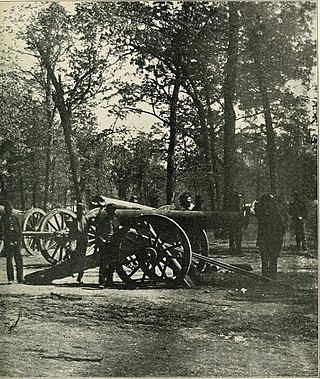
Battery B, 2nd Illinois Light Artillery Regiment was an artillery battery from Illinois that served in the Union Army during the American Civil War. The battery was organized in June 1861. It fought at Shiloh, First Corinth, and Second Corinth in 1862. Subsequently, the unit garrisoned Corinth, Mississippi, until January 1864. It was stationed at Memphis, Tennessee, until June 1864 when it fought at Brices Cross Roads. The battery garrisoned Memphis until it was mustered out in July 1865.
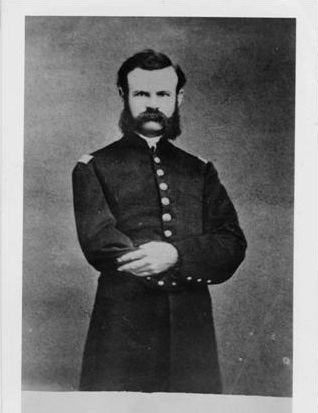
Battery F, 2nd Illinois Light Artillery Regiment was an artillery battery from Illinois that served in the Union Army during the American Civil War. The battery was organized in December 1861 at Cape Girardeau, Missouri. The unit fought at Shiloh, First Corinth, and Second Corinth in 1862 and at Vicksburg and Jackson in 1863. The battery served in the Atlanta campaign and at Nashville in 1864. It was mustered out of federal service in July 1865. The battery's first commander was John Wesley Powell who later led an exploration of the Grand Canyon.














